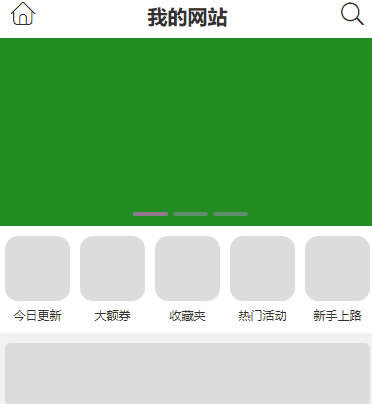在做单页面应用程序时,一般页面布局头尾两块都是固定在布局页面,中间为是路由入口。这时访问页面时头部标题不会变,该问题的解决方案如下:
通过采用组件内路由卫士(beforeRouterEnter、beforeRouterUpdate)与路由元信息(meta) 来实现更新头部标题信息。点击查看文档
beforeRouterEnter:第一次进入时调用。
beforeRouterUpdate:重复使用当前组件时调用。
效果图如下:
注意看页面标题与图标变换

路由元信息(meta)配置
在路由元信息中配置页面标题,通过组件内路由卫士获取
const router = new Router({
mode: 'history',
base: process.env.BASE_URL,
routes: [
{
path: "help",
name: "help",
meta: {
title: "新手帮助"
},
component: () => import('./views/Help.vue')
},
{
path: "page",
name: "page",
meta: {
title: "宝贝信息"
},
component: () => import('./views/Page.vue')
}
]
})
路由布局页面
header 与 footer 是固定头尾, main为路由入口。 title为页面标题
<template>
<div id="app">
<header class="header">
<button @click="back" class="t-xiaoxi iconfont" v-html="icon"></button>
<h1 class="t-title">{{title}}</h1>
<router-link to="/search" class="t-sousuo iconfont"></router-link>
</header>
<div class="main">
<router-view></router-view>
</div>
<footer class="footer">
// ...
</footer>
</div>
</template>
在beforeRouteEnter、beforeRouteUpdate函数中获取路由元信息,并更新页面标题。
beforeRouteEnter:当第一次进入时,会被标题进行一次初始化操作
beforeRouteUpdate:当组件被重复调用时,执行更新操作。<script> export default { name: "app", data() { return { title: "我的网站", url: '/', icon: '' } }, methods: { back() { this.$router.go(this.url); }, update(route) { [this.title, this.url, this.icon] = ["我的网站", '/', '']; if (!['', '/'].includes(route.path)) { // 判断是否根页面,用于切换标题与返回上一页或回到主页 [this.title, this.url, this.icon] = [route.meta.title || "", '-1', '']; } } }, beforeRouteEnter(to, from, next) { next(vm => { //回调函数,此时this指针不可用,可采用回调函数访问。 vm.update(to); }) }, beforeRouteUpdate(to, from, next) { this.update(to); next(); } }; </script>